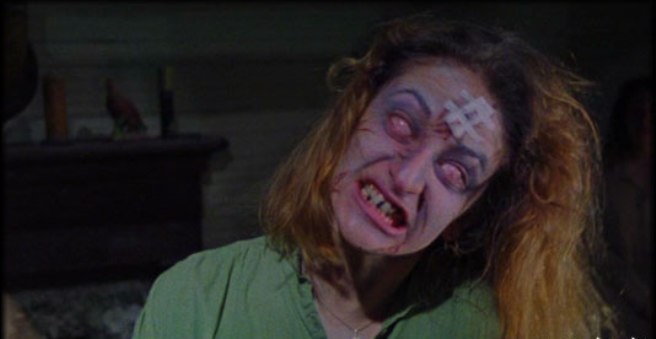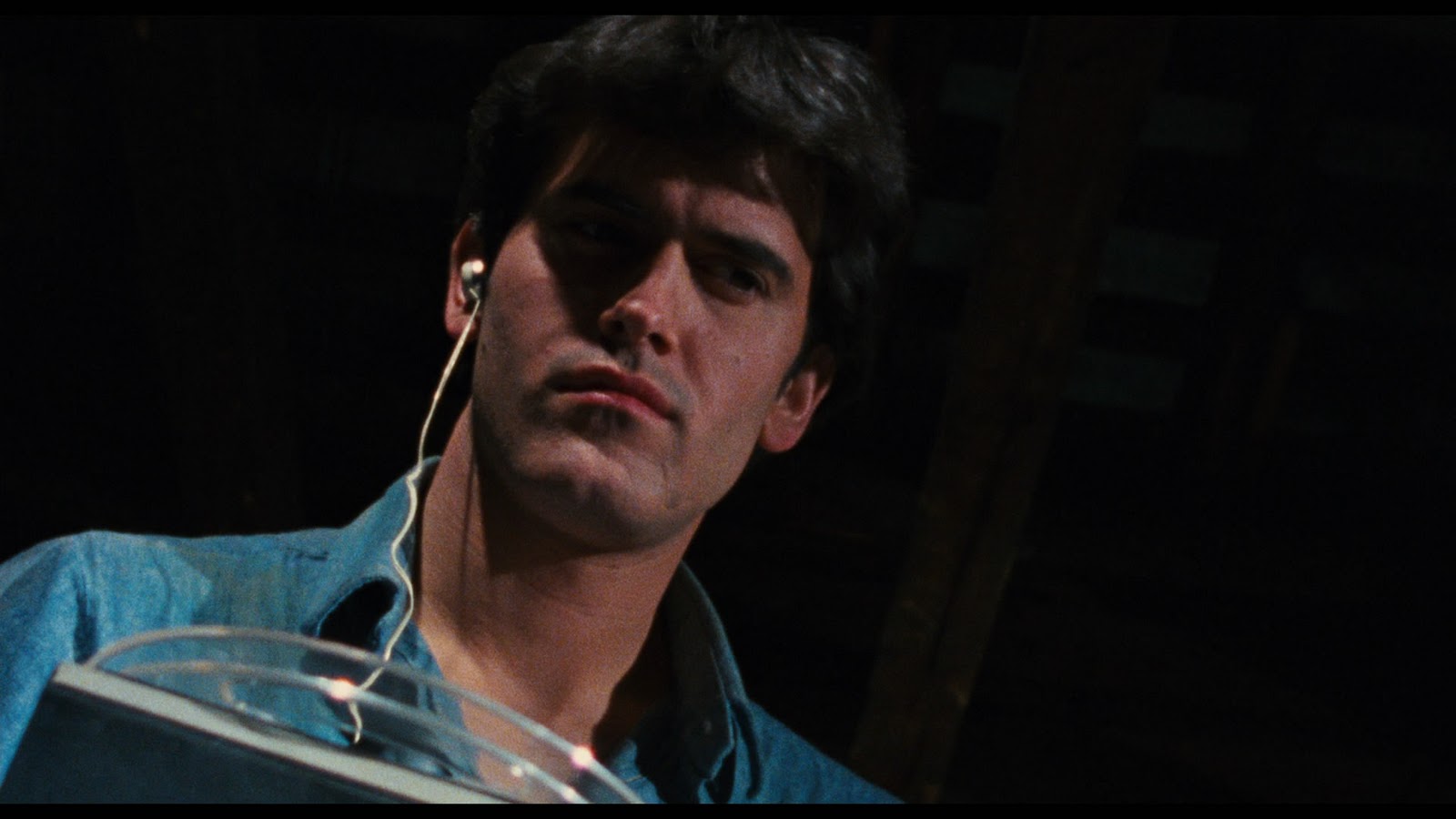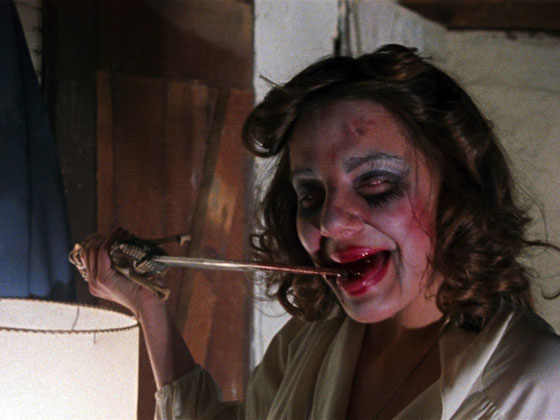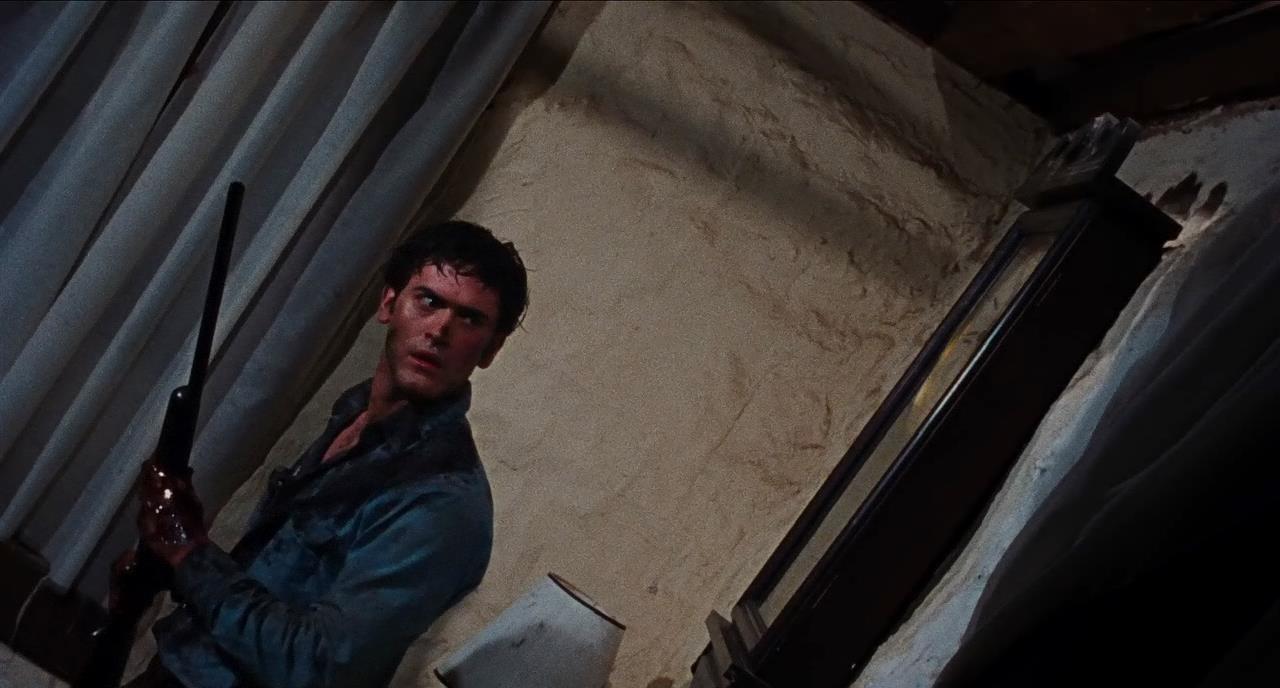6. It Costs Nothing to Be Creative
Say what you want about “The Evil Dead” and it’s small budget and cheap methods of filmmaking, but it has more creativity in one scene than most films have through their entirety. Raimi didn’t have all the money in the world so he and the crew had to get by however they could. Horror is a very effects based genre, and effects can cost serious money if you aren’t prepared.
Luckily, Raimi had been a fan of slap stick comedies and practiced magic in his youth which he claims helped him find new and unique ways to achieve certain effects. Using slight of hand and magician tricks is nothing new because during the Golden Age of Hollywood cinema filmmakers would often use magicians to help achieve in-camera special effects that normally would be near impossible.
Another interesting way Raimi got the most bang for his buck was by building a couple low-budget rigs to replace the more expensive equipment he didn’t have. Such rigs included a Dolly replacement, and a Shaky Cam for use during any first person perspective shots in the woods. Rumor also has it that he attached his rig to a bike for the films epic final long shot. This is something every young filmmaker must learn because not having much money is a constant obstacle throughout filmmaking and unless you’ve got a good Producer and a high budget, it won’t be going away. Don’t let the pitfall of money stop you.
7. Anyone Can Be an Actor
When first starting out finding actors can be hard, and finding actors willing to work for next to nothing if not free is even harder. However, that’s not to say it’s impossible because just about everyone around you could easily be the next big star. When Raimi made “The Evil Dead” he was in his early 20s and living in Michigan, so his pool of available crew and actors was limited, so he used what he had on hand.
The cast and crew, which was small, was composed almost entirely out of friends and family that he convinced to help out. His biggest ally throughout the early stages of his career was his High School friend Bruce Campbell. At the time Bruce was interested in acting but never really did much with it until “The Evil Dead” propelled him into the cult favorite he is now. Raimi was smart and cast people he knew could play the parts believably but didn’t blow through his budget on hiring working professionals. Use the tools and resources around you, because you just might strike gold.
8. Use Gore Appropriately
Gore and horror go hand-in-hand, and the way in which a filmmaker chooses to use gore can either make or break a film. Use it well and the film stands a chance at being remembered but do it poorly, and audiences will be very unforgiving. What one must remember though is that it’s not always the quality of the effects that audiences care about; it’s also placement, timing and how extreme they are.
“The Evil Dead” isn’t subtle in any way and is one of the more gruesome films to come out of the ’80s partly because of the over-the-top nature and also because how gritty each effect looked. Raimi and his special effects artist Tom Sullivan had the gore and the make-up build to a climax and the film amps up as it goes. The progression from beginning to end feels logical, so by the time we’re treated with a glorious stop-motion melting sequence near the end, we feel satiated in knowing that nothing was out of place.
Don’t just throw blood on screen just to have it, give it a reason and if you want to go over-the-top, establish that the world you created in your film is one in which that makes sense.
9. Keep It Simple
As the title says, keep it simple, from the production to the effects and the story. There’s a time and a place for complicated narratives and a hundred locations, but unless you’ve got the budget to make that happen or an insanely creative mind that can see past any problem, you’ll just end up hurting yourself if you go too big.
If you look at “The Evil Dead” it feels like it plays into it’s budget with it’s one location, small number of actors and simple story. Don’t stretch your buck too far, as it might not be worth the gamble. Use a film like this as a manifesto to cheap filmmaking and learn from what Raimi and his crew did well.
10. How To Make Your First Film
“The Evil Dead” does many things right and is a real inspiration not only because it’s a well made independent horror flick, but more so because it was Raimi’s first feature film. He made some Super-8 shorts in High School with friends and the 30-minute short film “Within the Woods” that served as a precursor to help him get funding, but none of those came out nearly as well as “The Evil Dead”.
Raimi struck gold and just did everything right, or at least, well enough. It was fresh, innovative and unlike anything moviegoers had seen at the time. Sure, it’s not without it’s mistakes, but the small details can be overlooked while seeing the big picture. To this day young filmmakers use this film and it’s stories as as a building block.
Raimi used what he had and what was available to make a film he felt was both shocking and fun. We don’t know if the film came out exactly how he wanted, but if I had to guess I’d say it didn’t. The film surely augmented, changed and took new life as it was being developed. It’s an organic process, and everyone can learn from the mistakes made on a first film. No one makes a perfect film right away, and while Raimi hit the jackpot his first time out the gate, he’ll be the first to say it has it’s flaw.
Take what you’ve learned here, apply it to your own films and go out and shoot a movie. Don’t give up, see it through completion and learn from it. You might have a piece of crap by the end, but, for all you know you might have the next Evil Dead as well.
Author Bio: Michael Viers is an award winning filmmaker from Milwaukee, WI and a graduate from the University of Wisconsin – Milwaukee with a Bachelor’s Degree in film. He has made two successful short films during his stay at the university: From the Darkness Theatre which screened at the Short Film Corner at the 66th Festival de Cannes and Love You Still which debuted at the 2013 Milwaukee Film Festival. He’s currently trying to get more work writing articles about film, just wrapped his fourth short and is allocating resources to make his first feature.



